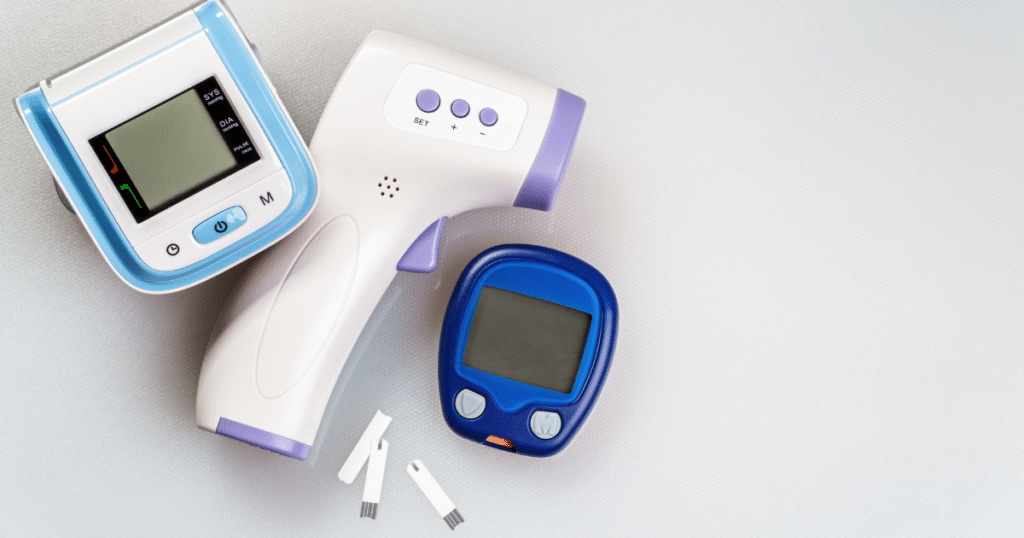In recent years, telehealth has been more widely accepted by younger and more tech-savvy individuals. Now, however, both the government and “regular people” are starting to embrace this progressive method of accessing modern medicine more and more.
These days, especially in the wake of the Covid-19 pandemic, telehealth is becoming widely available across the US from both doctors and insurance providers. This is great news for individuals who struggle to attend in-person doctor’s appointments, those unable to find affordable healthcare within their local communities, and people who have anxiety during doctors exams.
What is Telehealth?
Quite simply, “telehealth” is healthcare that uses technology to connect the patient and the medical professional when they can’t be in the same place together.
A more technical definition of telehealth would be to say that it is the delivery and distribution of health and medical-related information and services through communication technology, electronic platforms and digital information.
Telehealth is sometimes also referred to as “m-health” for mobile health or “e-health” for electronic health. There are a wide array of devices and tools that will allow a person to utilize telehealth services, including computers, smartphones, tablets, apps and wearable technologies and medications.
These remote resources allow for a less invasive medical experience and far more flexibility through the reduction or elimination of doctor visits. It is important to understand that these types of virtual visits do have some limitations. Some conditions and treatments will require an in-person visit. However, many disability medical exams and services are available entirely online at this time.
Telehealth for Medicare and Medicaid
In October and December 2020, the government took action to ensure that Medicare and Medicaid would have funding for telehealth operations and would increase the various types of health services that could be conducted through telehealth for Medicare and Medicaid recipients. For individuals who qualify for Medicare or Medicaid, it is likely that you will qualify for various telehealth services coverage. However, these services may be restricted in their availability based on your specific needs.
Additional changes are also being made. For example, many states will no longer require that a patient has an existing relationship with their telehealth provider. Co-pays are no longer required for telehealth services in some states. In many instances, patients no longer have to limit medical providers to their state of residence. And many individuals can use telehealth services offered by an approved and fully licensed doctor in any state.
Doctors Who Use Telehealth
The SSDI application process can be lengthy, with multiple steps. At every level of the process, you’re going to rWhile any doctor can choose to provide telehealth services, some doctors are more likely to adapt to telehealth over others. Like all professionals, some individuals are more keen to incorporate technology while others are resistant to change. It is also possible that some doctors simply are not comfortable with technology and the process of virtually diagnosing patients. Before you feel disappointed or discouraged, remember that for each doctor who is reluctant to technology advances there are many who are embracing them.
Medical professionals who specialize in a certain field are typically the most difficult to reach due to the limited number of them across the country. The good news is that doctors who specialize in these certain fields represent the largest number of users in telehealth services. According to the AMA, radiologists, psychiatrists and cardiologists have adopted telehealth practices at the highest rates. Doctors who use telehealth the least right now include allergists and immunologists, gastroenterologists and Ob-gyns. This is likely because in-person exams are often necessary for those types of medicine, the startup costs are outside of a practice’s budget, or the doctor wishes to continue with traditional medical methodologies.
ely on your medical professionals for help. One of the most important things you can do to improve your chances of success – and help your doctor help you succeed – is to get regular treatment and keep good records.
If your initial SSDI application is denied, you still have additional chances for approval during the appeals processes. During the appeals stages, the doctor who wrote your letter may have to speak on your behalf. As such, it is essential to continue with your appointments so the doctor remains supportive in your process and is aware of everything that’s happening with your conditions.
When your medical professionals provide evidence to the SSA, the letter or updates will need to have specific dates and locations of previous tests, exams and treatments. The more evidence you and your medical professionals can provide, the better! Do not avoid follow up visits and long-term treatments.
And, once you receive your doctor’s letter to submit the SSA, it is critical that you continue treatment and follow-up appointments. Getting regular treatment from your medical professionals can make all the difference in your SSDI application (and your life in general!).
Before You Make an Appointment
Before you select a telehealth doctor and make an appointment, you’ll want to take steps to ensure a smooth process. For instance, if you have insurance, it is essential that the telehealth doctor is within your approved network of providers. For those who do not have insurance, you will want to consider whether there is a free or affordable clinic, practice or center that can provide you with telehealth services. Keep in mind that the rules for telehealth services will likely be changing frequently in the coming months and years. If you do not qualify today, you might qualify tomorrow.
Benefits of Telehealth
Telehealth care helps to empower patients with their medical care and make life easier for them. Telehealth also allows patients to access a larger network of medical professionals. Giving individuals the ability to meet with the best medical professionals in a field rather than only those in a limited geographical region. These platforms also provide medical professionals with greater support and resources to improve upon the care they provide.
Telehealth has the ability to save both the doctor and patient money in many ways. It allows doctors to see more patients from a wider market. Patients are able to decrease transportation costs or the amount of time they have to take off from work to attend doctor’s appointments at a physical location. In fact, many doctor’s appointments can now even be made while at work. Doctors can track a patient’s progress remotely to help prevent future illnesses and medical emergencies, both of which save the provider and patient money in the short and long term. Telehealth services can also prevent individuals from being exposed to contagious illnesses and diseases while receiving treatment. These are only a select few of the benefits of telehealth
The benefits, services and advances in telehealth are only just beginning. The more the government accepts and approves telehealth services and coverage the greater your chance for eligibility during your disability benefits application process.
This article is presented for general information purposes only. Nothing in this article should be taken as medical advice. Medical decisions (including whether to start, stop, or modify any treatment plan) are extremely important and should always be made with the advice and counsel of a qualified medical professional.

Linda Cosme formerly served as a Member of the Appeals Council (AC) for the Social Security Administration (SSA), and Program Expert for the Social Security Administration and Disability Quality Branch (DQB). Ms. Cosme also served as a Quality Assurance (QA) Reviewer, Initial Disability Examiner, Reconsideration Disability Examiner, and Continuing Disability Examiner (CDR) for the Disability Determination Services (DDS). She is admitted to practice law in Arizona, Georgia, and the United States Ninth Circuit Court of Appeals.






